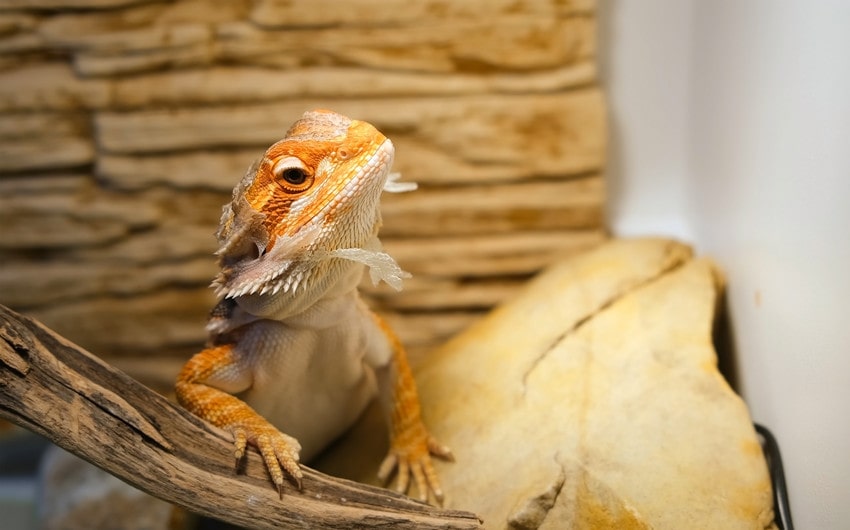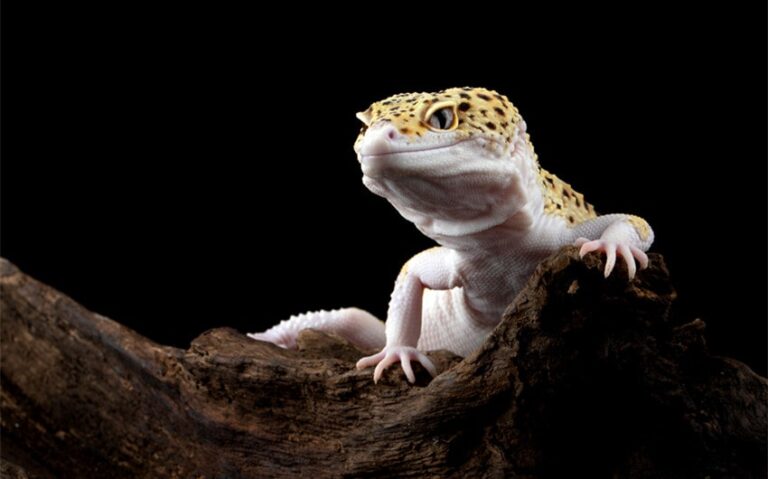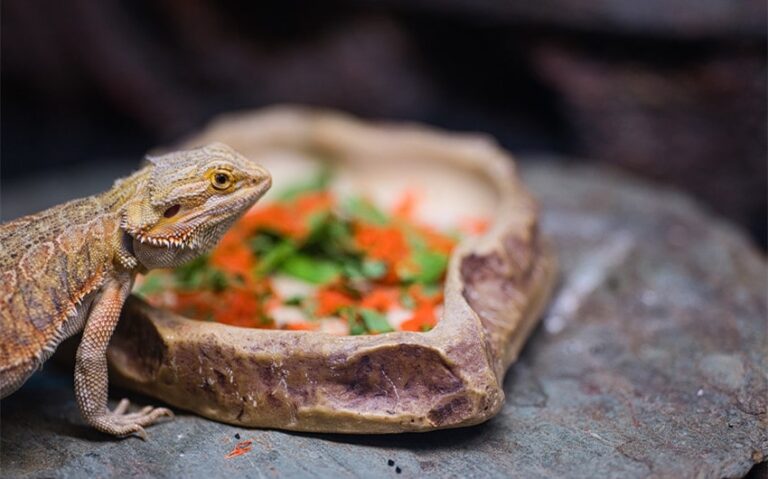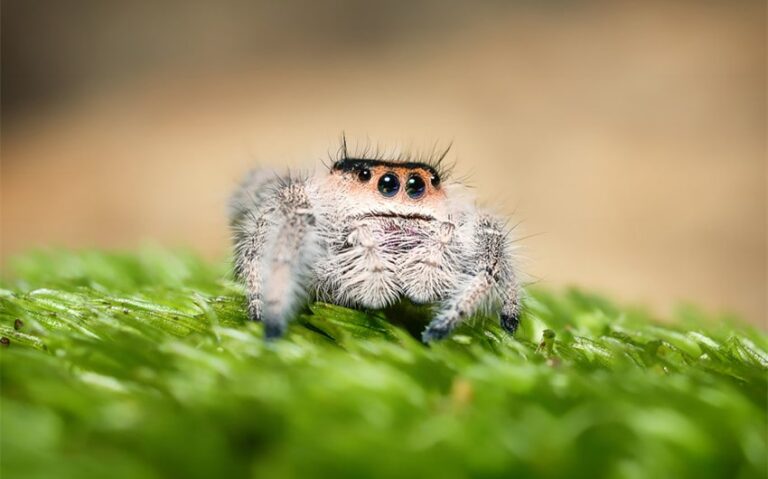How Often Do Bearded Dragons Shed: Factors and Tips
Bearded dragons are popular pets known for their calm demeanor and unique appearance, but like all reptiles, they shed their skin as they grow. If you’re wondering, “How often do bearded dragons shed?” the answer depends on their age, size, and overall health.
Younger dragons shed more frequently as they grow quickly, while adults shed less often. Understanding the shedding process is important for keeping your dragon comfortable and healthy. In this article, we’ll explore the shedding cycle of bearded dragons and how to care for them during this natural process.
What is Shedding in Bearded Dragons?
Shedding, also known as ecdysis, is a natural and essential process for bearded dragons and all reptiles. As bearded dragons grow, their skin does not stretch like that of mammals, so they must shed their outer layer of skin periodically to accommodate their changing body size. Shedding also helps remove old or damaged skin, making way for a healthy, new layer.
1. Why Do Bearded Dragons Shed?
Bearded dragons shed primarily to support their growth and maintain healthy skin. As they grow, their outer layer of skin becomes tight and begins to flake or peel away. This process allows them to replace the old skin with a fresh layer that fits their larger body size.
In addition to growth, shedding can also be triggered by:
- Injury or Skin Damage: If a bearded dragon sustains minor skin injuries or irritation, shedding helps to heal and replace the damaged area.
- General Skin Health: Regular shedding removes parasites, dirt, and bacteria that may accumulate on their skin, keeping them healthy.
2. The Natural Shedding Process
The shedding process starts when the skin begins to loosen and separate from the underlying new skin. During this time, bearded dragons may experience duller skin, restlessness, or changes in behavior as the skin prepares to shed.
Unlike some reptiles that shed their skin in one piece, bearded dragons typically shed in patches, especially as they get older. For hatchlings and juveniles, shedding may occur more uniformly across the body, while adult dragons often shed only in specific areas, such as their head, legs, or tail.
How Often Do Bearded Dragons Shed?
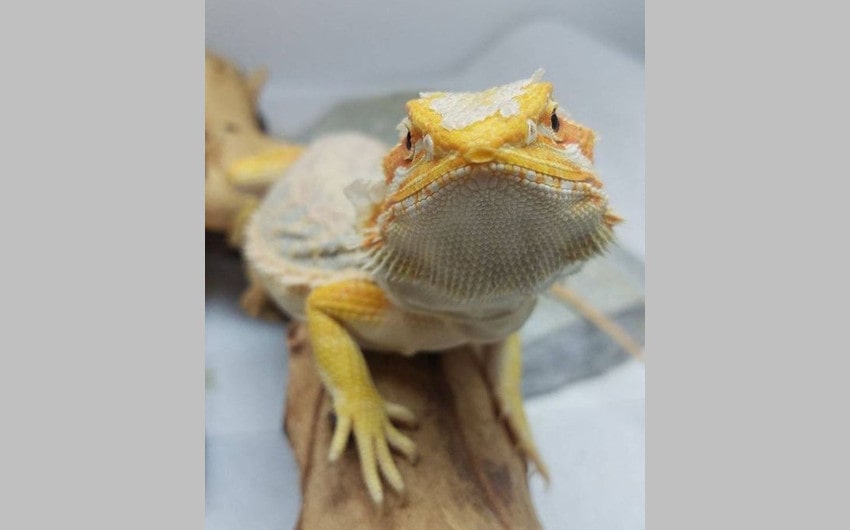
Image source: Pinterest
The frequency with which bearded dragons shed depends largely on their age, growth rate, health, and environment. Shedding is a natural process that occurs more often during periods of rapid growth, such as when they are young. As they age and their growth slows, so does the frequency of shedding. Understanding these different phases will help you anticipate when your bearded dragon is about to shed and how to assist them during this time.
1. Shedding Frequency in Hatchlings and Juveniles
Young bearded dragons, particularly hatchlings and juveniles, experience rapid growth, which means they shed frequently. During this phase, shedding can occur as often as every few weeks, sometimes even every couple of weeks for very young hatchlings. This is because their bodies are growing quickly, and they constantly need to shed their old skin to make way for new growth.
- Hatchlings (up to 6 months old): During the hatchling phase, bearded dragons are growing at their fastest rate. They can shed every 1-2 weeks. You’ll notice that these sheds are more complete, often involving the entire body shedding in a more uniform manner.
- Juveniles (6-18 months old): As bearded dragons move into the juvenile stage, their growth rate begins to slow slightly, but they still shed frequently. Juvenile dragons can shed every 3 to 4 weeks, though this may vary depending on their diet and environment. The shedding process remains essential for them as they continue to grow and develop into adulthood.
2. Shedding Frequency in Adult Bearded Dragons
Once bearded dragons reach adulthood, their growth slows dramatically, and so does their shedding frequency. Adult bearded dragons typically shed far less frequently than their younger counterparts. On average, adult bearded dragons shed only a few times a year, often as little as 2 to 3 times annually.
- Adults (18 months and older): Fully grown bearded dragons no longer experience the rapid growth of their younger years, so their need to shed becomes less frequent. Instead of shedding their entire body at once, adults often shed in patches, such as just the head, limbs, or tail. The time between sheds can vary based on their overall health and environmental factors, but it generally occurs every few months.
3. Factors That Influence Shedding Frequency
Several key factors can influence how often a bearded dragon sheds, regardless of age. Paying attention to these factors can help you maintain a healthy shedding cycle for your dragon.
- Growth Rate: As mentioned earlier, younger dragons shed more frequently due to rapid growth. However, even within the same age group, growth rates can vary. Dragons that are growing faster due to genetics or a high-quality diet may shed more often than those growing at a slower pace.
- Health: A healthy bearded dragon with a balanced diet, proper hydration, and good overall care will shed more consistently. Health issues, such as malnutrition, dehydration, or skin conditions, can delay or disrupt the shedding process.
- Environment: The temperature and humidity of a bearded dragon’s enclosure play a significant role in how smoothly and often they shed. Maintaining proper temperatures (85-95°F during the day and a basking spot of 100-110°F) and humidity levels (30-40%) helps facilitate normal shedding. A lack of proper humidity can lead to shedding issues, like stuck shed, which may require intervention.
- Diet: A well-balanced diet rich in protein, calcium, and vitamins helps support the shedding process. Bearded dragons that are fed a varied diet with proper supplements will shed more efficiently, as their skin and scales are healthier. Calcium and vitamin D3, in particular, play a crucial role in skin health, ensuring that the dragon’s body can produce healthy, flexible skin.
- Hydration: Bearded dragons need to stay hydrated to shed properly. While they don’t always drink water directly, they absorb moisture from their food and through the skin. Dehydrated dragons are more likely to have shedding problems or experience delayed shedding.
4. Changes in Shedding Frequency Over Time
As bearded dragons age, their shedding frequency will naturally decrease, especially once they are fully grown. If you notice a sudden change in shedding frequency in an adult bearded dragon (e.g., shedding much more often or not shedding at all for long periods), it may indicate an underlying health issue, such as poor nutrition or improper enclosure conditions. In such cases, it’s important to evaluate their diet, environment, and overall health, and consult a veterinarian if necessary.
Signs Your Bearded Dragon is About to Shed
Here are the key signs to watch for when your bearded dragon is about to shed:
- Dull or Faded Skin: Skin appears grayish or cloudy as it loses its vibrant color, often in patches.
- Behavioral Changes:
- Restlessness or irritability, as they may rub against surfaces.
- Increased hiding to avoid discomfort.
- Rubbing Against Objects: Your dragon may rub their body, head, or limbs against rough surfaces like rocks or logs to loosen the skin.
- Changes in Appetite: Temporary loss of appetite or refusal to eat, especially right before and during shedding.
- Frequent Soaking or Basking: Extended time spent basking under the heat lamp or soaking in water to soften the skin and aid shedding.
- Lethargy or Sleepiness: Some dragons become more tired or sluggish, sleeping more than usual as shedding begins.
- Peeling or Flaking Skin: Visible patches of skin peeling or flaking, often starting at the head, tail, or limbs.
- Cloudy or Dull Eyes: Cloudy eyes, especially around the face, as the skin near the eyes starts to shed.
How to Care for a Shedding Bearded Dragon

Image source: Pinterest
Shedding is a natural and essential part of a bearded dragon’s life, but it can sometimes be uncomfortable and stressful for them. Providing the right care during this process can help make shedding smoother and more comfortable for your bearded dragon. Here are some key ways to care for your dragon while they are shedding:
1. Providing Proper Humidity
Bearded dragons originate from arid environments, but a bit of extra humidity during shedding can be beneficial. The additional moisture helps soften the skin, making it easier for the old layer to peel away.
- Increase Humidity Slightly: During shedding, slightly raising the humidity in your dragon’s enclosure to around 40-50% can aid the shedding process. You can achieve this by misting the enclosure lightly once or twice a day, but be cautious not to overdo it as too much humidity can lead to respiratory issues.
- Offer a Moist Hide: A moist hide is another way to provide localized humidity for your dragon. You can create one by placing damp paper towels or sphagnum moss in a hide box. Your bearded dragon can enter the hide when they need extra moisture, helping to soften the skin during shedding.
2. Bathing Your Bearded Dragon
Regular baths are one of the most effective ways to help your bearded dragon during shedding. The warm water provides hydration through the skin, which softens the old skin and makes it easier to shed.
- Bathing Frequency: During shedding, bathe your bearded dragon in lukewarm water (around 85-90°F) 3-4 times a week. Baths should last for about 15-20 minutes.
- Water Depth: Make sure the water is shallow, just deep enough to cover their belly. Never leave your bearded dragon unattended during a bath, as even shallow water can pose a risk.
- Gently Rub the Skin: While your dragon is in the bath, you can gently rub the areas where the skin is peeling (such as the limbs or tail). However, avoid pulling or peeling the skin manually, as this can cause injury if the skin is not ready to come off.
3. Hydration
Proper hydration is critical during the shedding process. While bearded dragons get much of their moisture from food, they may need additional water during shedding to help their body produce and remove the old skin.
- Water Dish: Always provide a shallow water dish in your bearded dragon’s enclosure so they can drink as needed. Keep the water fresh and clean, changing it daily to encourage drinking.
- Misting: Lightly misting your bearded dragon once a day can help increase hydration. Misting also softens the skin, particularly in dry environments. If your dragon drinks the water droplets from their face or body, it’s a sign they are benefiting from the misting.
4. Diet During Shedding
A nutritious, well-balanced diet is crucial during shedding, as your dragon needs proper nutrition to support healthy skin development. Offering a variety of high-quality foods during this time can make the shedding process easier.
- Insects: Ensure your bearded dragon is getting plenty of protein-rich insects like crickets, mealworms, and dubia roaches during shedding. These foods support the body’s energy needs during the shedding process.
- Calcium and Vitamin D3: Dust the insects with calcium and vitamin D3 supplements regularly to ensure your dragon is getting enough nutrients to maintain strong bones and healthy skin. Proper supplementation helps prevent shedding issues caused by nutritional deficiencies.
- Fresh Greens and Vegetables: Offer a variety of leafy greens (such as collard greens, mustard greens, and dandelion greens) and other vegetables like squash or carrots. These foods are high in vitamins and moisture, which help keep your dragon hydrated and healthy during shedding.
5. Providing Rough Surfaces in the Enclosure
Bearded dragons naturally use rough surfaces to help remove their shedding skin. By including items in their enclosure that they can rub against, you can help them shed more effectively.
- Rocks and Logs: Place rough-textured items like basking rocks, branches, or logs in your dragon’s habitat. These surfaces allow them to rub their body and limbs to loosen the skin. Make sure the objects are stable and safe for your dragon to climb on.
- Avoid Sharp or Jagged Surfaces: While rough surfaces are helpful, avoid placing sharp or jagged objects in the enclosure that could potentially injure your dragon during shedding.
6. Handling During Shedding
Handling a bearded dragon during shedding should be done with extra care. Shedding skin can make them feel sensitive or irritable, so it’s important to approach them gently and respect their comfort level.
- Be Gentle: If you handle your bearded dragon during shedding, do so gently and avoid putting too much pressure on areas where the skin is peeling. If your dragon seems particularly stressed or irritable, it’s best to limit handling until the shed is complete.
- Avoid Pulling the Skin: It may be tempting to help your dragon by pulling off loose skin, but this can cause harm. Only the skin that comes off easily during natural shedding should be removed. Forcing off skin that isn’t ready to shed can result in open wounds or infections.
7. Monitoring for Shedding Issues
While most bearded dragons shed without any problems, there are times when shedding doesn’t go smoothly. This is often referred to as “retained shed,” where small patches of skin don’t fully come off. Common areas where skin may get stuck include the toes, tail, and around the eyes.
- Check for Retained Shed: Regularly check your dragon’s toes, tail tip, and limbs for any signs of retained shed. Leftover skin in these areas can restrict blood flow and cause issues if not addressed.
- How to Help with Retained Shed: If you notice retained skin, give your dragon a warm bath and gently massage the area to loosen the skin. If the skin still doesn’t come off after a few baths, you may need to consult a vet for further assistance.

